Breaking with tradition: new generation of Chinese artists reflect a globalising world
Emerging
generation of Chinese artists offer new materials and experimental
styles, ditching the overtly political works of some of their
predecessors, writes Daniel Scheffler
WE RECOMMEND







Tech & Design
04 Aug 2016
Life in a futuristic home with a modern fireplace, bed, clock, coffee table and chandelier
Tech & Design
04 Aug 2016
Italian heritage: Why
Tod's renovated the Colosseum, and why Bulgari repaired the Spanish
steps, while Fendi threw millions into a fountain
Tech & Design
07 Jul 2016
Gentlemen, this luxury lighter, fountain pen, cufflinks and more are just for you
Tech & Design
01 Sep 2016
Perfect mix - Hassan Abdullah uses his bold imagination to design a house in London that's fun, glamorous, eclectic and chic
Tech & Design
07 Jul 2016
Japanese designer Oki Sato finds inspiration across different industries and projects
Tech & Design
01 Sep 2016
Jiang Qionger of Hermès-backed Shang Xia brings Chinese aesthetics to the international stage
Tech & Design
01 Sep 2016
Decorate your home with furniture and ornaments which feature a modern regional twist
Global
art icons Ai Weiwei and Zeng Fanzhi, step aside. Song Yige, Wang
Yuyang, Song Ta and Zhang Ruyi are in the vanguard of young Chinese
artists breaking with tradition and using new technologies wherever
possible.
"We are used to associating Chinese artists with the Cultural Revolution and now the younger generation have a refreshed approach from their predecessors," says Alexander Platon, senior director at Marlborough Fine Art in London.
"Their ideology and their individual experiences are totally different to the previous generation, so their art is broad and not purely political, which brings them closer to practising artists from other parts of the world." This has resulted in a host of new materials and interesting experimental styles coming to the market. In time, Song, Wang and Zhang might become household names in the art cognoscenti world.
 Wany
Yuyang's Quarterly, 2015. Materials used in this installation include
silicon, bronze, red copper, brass, stainless steel and a tree.
Wany
Yuyang's Quarterly, 2015. Materials used in this installation include
silicon, bronze, red copper, brass, stainless steel and a tree.
"Song Yige, a painter who works and lives in Beijing, had her first show outside Asia earlier this year at Marlborough Fine Art in London. The exhibition attracted enormous attention from international media and collectors throughout the West," Platon says. A show called "A Beautiful Disorder", at the Cass Sculpture Foundation in Britain, is another where the work of young Chinese artists is prominently displayed and lauded.
A handful of promising artists have caught the eye of industry experts such as Platon. These names include Wang (solo show at Long Museum in Shanghai and recent book by Flash Art), Jennifer Wen Ma (Paradise Interrupted at Lincoln Center Festival), Cao Fei (recent solo show at MoMA PS1) and Lu Pingyuan (Liverpool Biennial and Centre for Chinese Contemporary Art in Manchester).
 Wang Yuyang’s Sigularity, 2015. Materials used include metal frame, motor and LED lights.
Wang Yuyang’s Sigularity, 2015. Materials used include metal frame, motor and LED lights.
Niru Ratnam, the director of START Art Fair - which is held at the Saatchi Gallery in London in September as a salute to emerging artists - thinks it is important to see emerging Asian artists show "side by side" with their peers from the west. "What I believe becomes apparent through doing this is that while there are strong links between what emerging artists in Asia and Europe are making, there are also significant local nuances," Ratnam says. "This might be to do with the mediums they are using but more often is to do with subject matter and the way in which they are using different media."
The world is showing interest, slowly but surely. Artist Liang Yuanwei says that early in her career her only connection to the global market was through Western scholars studying Chinese art. Nowadays, she is connected "through partnerships with galleries and participation in international art projects, and also thanks to art exhibitions which were supported by international collectors and international media".
Platon agrees with this new attention: "There is an increased interest in contemporary Chinese art that is being reflected in museum and gallery programmes and in art criticism. This new generation of artists are creating impressive works that reflect a globalising art world."
 Zhao Yangs’s Eskimo, oil on canvas, 2014. Photo: K11 Art Foundation
Zhao Yangs’s Eskimo, oil on canvas, 2014. Photo: K11 Art Foundation
One of the defining factors of this emergence of young Chinese artists is the increased access to technology, and how they seem to all have embraced it or intentionally shunned it in different ways. "I see them breaking away from the very particular language and political imagery used by their predecessors," Platon says. "Like many other artists around the world, Chinese artists appreciate the advantages provided by new technology employing new media, new materials and new methods to realise their work, while questioning the social problems that accompany these changes.
"Using 3D rendering and modelling software, Wang Yuyang has converted one of the most iconic and influential texts in modern history - Karl Marx's "Capital: Critique of Political Economy" (1867) - into a binary code that entirely determined the material, colour and structure of the sculptural outcome."
 Liang
Yuanwei’s 2015 work, oil on linen. Liang says she is connected to the
global market through partnerships with galleries and international art
projects.
Liang
Yuanwei’s 2015 work, oil on linen. Liang says she is connected to the
global market through partnerships with galleries and international art
projects.
The work, Platon says, not only alludes to the "collapsing boundaries between art and technology", but also raises pertinent questions concerning the "power of ideology in today's hyper-networked, globalised world".
This point of no return is the perfect hotbed where artists such as Wang Yuanwei start to contemplate technology.
"Technology has penetrated into my daily life, and made an impact on how I understand and express art," Wang says. "Technology has also become a key factor in my decision-making process and attitude towards art."
For Zhao Yang, who specialises in oil on canvas, the comparison of his medium and material is looking at the primitive against the most contemporary. "I cannot deny that photos and images have impacted and influenced painting in Chinese Contemporary art; technology is meaningful, therefore images I obtain from the internet will, to some extent, affect the way we create," he says.
 Cao Fei’s Back to the Garden. It was exhibited at the Lombard-Freid Projects in Chelsea.
Cao Fei’s Back to the Garden. It was exhibited at the Lombard-Freid Projects in Chelsea.
There is ample support from the western world and China. One of the evangelists for young Chinese artists is the K11 Foundation (KAF) based in Hong Kong. Founded by Adrian Cheng in 2010, KAF is a not-for-profit organisation, which "supports the development of Chinese contemporary art from Greater China". The organisation is devoted to promoting contemporary Chinese artists through international programmes, and finding ways that these artists can fit themselves into a global art world as part of their career development.
Artists such as Zhao feel the love. "I feel very lucky to be living in an era in which the society is welcoming and open and because of that I can indulge in my own dreams without sacrificing much. My achievements would not have happened without support from many art institutions, such as the K11 Art Foundation," Zhao says. "I participated in a couple of international art exhibitions organised by KAF, including: "WE: A Community of Chinese Contemporary Artists" (2016) and "Today: History, Art, Architecture and Design, the '80s" at the Centre Pompidou, Paris.
 La Town by Cao Fei (2014)
La Town by Cao Fei (2014)
"All these events have been very well-received by the global media and public," Zhao adds. "As time passes there has been an increase in the number of international collectors of my works. I think art is a common language and perfect channel to connect people."
This message of globalisation is echoed by many in his industry. Artist Zhang Enli eloquently says: "I am determined to narrow the borders between regions and avoid my work becoming a symbol, as art is meant to be open to interpretation."
Marcel Duchamp had the urinal, Andy Warhol that soup can and Ai Weiwei his bicycle. Perhaps the next big artist will again come out of China - and technology could be the thing raising Chinese art to new and exciting frontiers.
 Space Painting by Zhang Enli
Space Painting by Zhang Enli
EMERGING TALENTS
Five contemporary Chinese artists to keep an eye on:
"We are used to associating Chinese artists with the Cultural Revolution and now the younger generation have a refreshed approach from their predecessors," says Alexander Platon, senior director at Marlborough Fine Art in London.
"Their ideology and their individual experiences are totally different to the previous generation, so their art is broad and not purely political, which brings them closer to practising artists from other parts of the world." This has resulted in a host of new materials and interesting experimental styles coming to the market. In time, Song, Wang and Zhang might become household names in the art cognoscenti world.
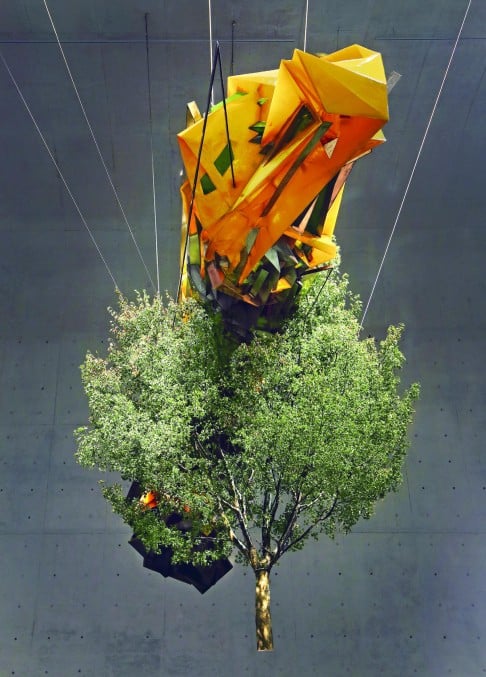 Wany
Yuyang's Quarterly, 2015. Materials used in this installation include
silicon, bronze, red copper, brass, stainless steel and a tree.
Wany
Yuyang's Quarterly, 2015. Materials used in this installation include
silicon, bronze, red copper, brass, stainless steel and a tree."Song Yige, a painter who works and lives in Beijing, had her first show outside Asia earlier this year at Marlborough Fine Art in London. The exhibition attracted enormous attention from international media and collectors throughout the West," Platon says. A show called "A Beautiful Disorder", at the Cass Sculpture Foundation in Britain, is another where the work of young Chinese artists is prominently displayed and lauded.
A handful of promising artists have caught the eye of industry experts such as Platon. These names include Wang (solo show at Long Museum in Shanghai and recent book by Flash Art), Jennifer Wen Ma (Paradise Interrupted at Lincoln Center Festival), Cao Fei (recent solo show at MoMA PS1) and Lu Pingyuan (Liverpool Biennial and Centre for Chinese Contemporary Art in Manchester).
 Wang Yuyang’s Sigularity, 2015. Materials used include metal frame, motor and LED lights.
Wang Yuyang’s Sigularity, 2015. Materials used include metal frame, motor and LED lights.Niru Ratnam, the director of START Art Fair - which is held at the Saatchi Gallery in London in September as a salute to emerging artists - thinks it is important to see emerging Asian artists show "side by side" with their peers from the west. "What I believe becomes apparent through doing this is that while there are strong links between what emerging artists in Asia and Europe are making, there are also significant local nuances," Ratnam says. "This might be to do with the mediums they are using but more often is to do with subject matter and the way in which they are using different media."
The world is showing interest, slowly but surely. Artist Liang Yuanwei says that early in her career her only connection to the global market was through Western scholars studying Chinese art. Nowadays, she is connected "through partnerships with galleries and participation in international art projects, and also thanks to art exhibitions which were supported by international collectors and international media".
Platon agrees with this new attention: "There is an increased interest in contemporary Chinese art that is being reflected in museum and gallery programmes and in art criticism. This new generation of artists are creating impressive works that reflect a globalising art world."
 Zhao Yangs’s Eskimo, oil on canvas, 2014. Photo: K11 Art Foundation
Zhao Yangs’s Eskimo, oil on canvas, 2014. Photo: K11 Art FoundationOne of the defining factors of this emergence of young Chinese artists is the increased access to technology, and how they seem to all have embraced it or intentionally shunned it in different ways. "I see them breaking away from the very particular language and political imagery used by their predecessors," Platon says. "Like many other artists around the world, Chinese artists appreciate the advantages provided by new technology employing new media, new materials and new methods to realise their work, while questioning the social problems that accompany these changes.
"Using 3D rendering and modelling software, Wang Yuyang has converted one of the most iconic and influential texts in modern history - Karl Marx's "Capital: Critique of Political Economy" (1867) - into a binary code that entirely determined the material, colour and structure of the sculptural outcome."
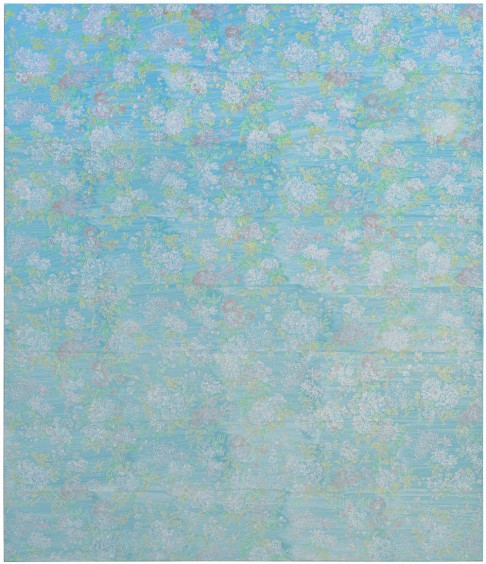 Liang
Yuanwei’s 2015 work, oil on linen. Liang says she is connected to the
global market through partnerships with galleries and international art
projects.
Liang
Yuanwei’s 2015 work, oil on linen. Liang says she is connected to the
global market through partnerships with galleries and international art
projects.The work, Platon says, not only alludes to the "collapsing boundaries between art and technology", but also raises pertinent questions concerning the "power of ideology in today's hyper-networked, globalised world".
This point of no return is the perfect hotbed where artists such as Wang Yuanwei start to contemplate technology.
"Technology has penetrated into my daily life, and made an impact on how I understand and express art," Wang says. "Technology has also become a key factor in my decision-making process and attitude towards art."
For Zhao Yang, who specialises in oil on canvas, the comparison of his medium and material is looking at the primitive against the most contemporary. "I cannot deny that photos and images have impacted and influenced painting in Chinese Contemporary art; technology is meaningful, therefore images I obtain from the internet will, to some extent, affect the way we create," he says.
 Cao Fei’s Back to the Garden. It was exhibited at the Lombard-Freid Projects in Chelsea.
Cao Fei’s Back to the Garden. It was exhibited at the Lombard-Freid Projects in Chelsea.There is ample support from the western world and China. One of the evangelists for young Chinese artists is the K11 Foundation (KAF) based in Hong Kong. Founded by Adrian Cheng in 2010, KAF is a not-for-profit organisation, which "supports the development of Chinese contemporary art from Greater China". The organisation is devoted to promoting contemporary Chinese artists through international programmes, and finding ways that these artists can fit themselves into a global art world as part of their career development.
Artists such as Zhao feel the love. "I feel very lucky to be living in an era in which the society is welcoming and open and because of that I can indulge in my own dreams without sacrificing much. My achievements would not have happened without support from many art institutions, such as the K11 Art Foundation," Zhao says. "I participated in a couple of international art exhibitions organised by KAF, including: "WE: A Community of Chinese Contemporary Artists" (2016) and "Today: History, Art, Architecture and Design, the '80s" at the Centre Pompidou, Paris.
 La Town by Cao Fei (2014)
La Town by Cao Fei (2014)"All these events have been very well-received by the global media and public," Zhao adds. "As time passes there has been an increase in the number of international collectors of my works. I think art is a common language and perfect channel to connect people."
This message of globalisation is echoed by many in his industry. Artist Zhang Enli eloquently says: "I am determined to narrow the borders between regions and avoid my work becoming a symbol, as art is meant to be open to interpretation."
Marcel Duchamp had the urinal, Andy Warhol that soup can and Ai Weiwei his bicycle. Perhaps the next big artist will again come out of China - and technology could be the thing raising Chinese art to new and exciting frontiers.
 Space Painting by Zhang Enli
Space Painting by Zhang EnliEMERGING TALENTS
Five contemporary Chinese artists to keep an eye on:
- Nabuqi, who is from Inner Mongolia, works with drawing and sculptures.
- Xinyi Cheng, working in Amsterdam, is known for her use of glowing colours.
- Shanghai native Chen Zhou was selected as a finalist in Beijing's Today Art Museum's "Focus on Talents Project" in 2012.
- Miao Ying uses the Chinese internet as her inspiration and contributed to the Venice Biennale last year.
- Liu Yefu, who works between New York and Beijing, splices together images to comment on mass media.


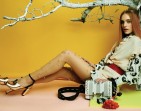


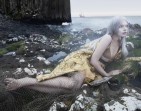

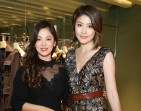
No comments:
Post a Comment